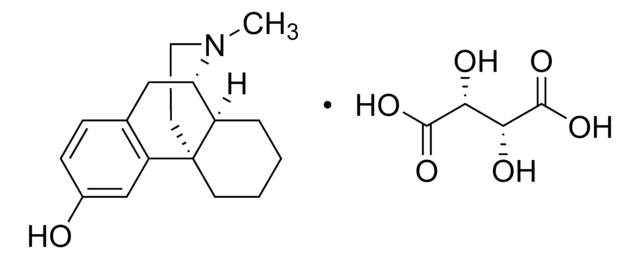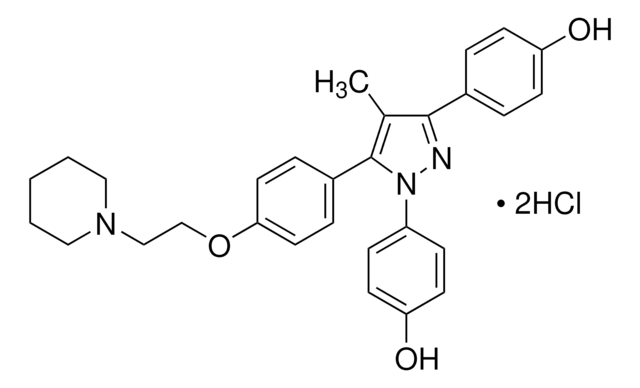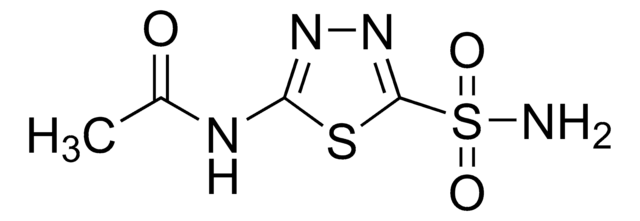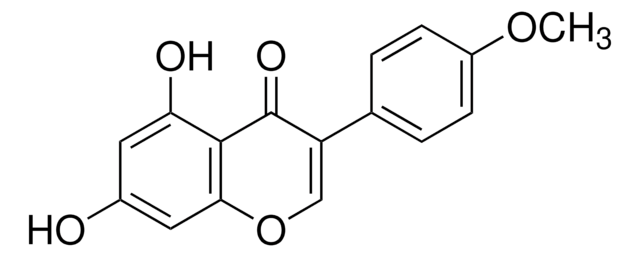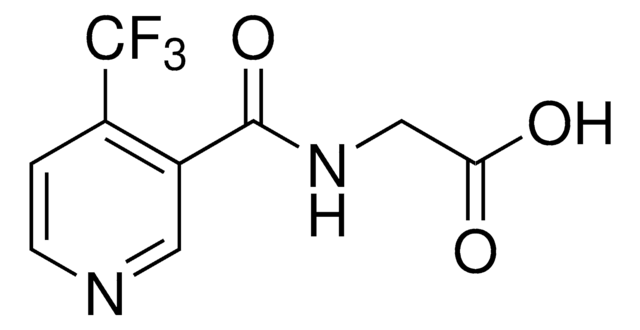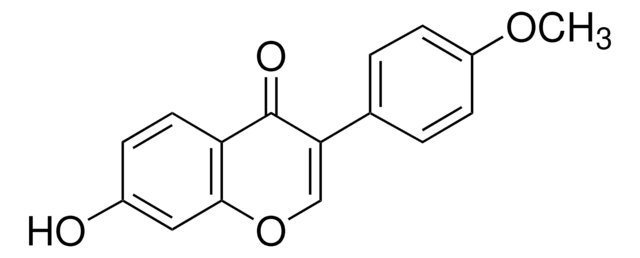D048
MPP+ iodide
≥98% (HPLC), powder
Sinónimos:
1-Methyl-4-phenylpyridinium iodide
About This Item
Productos recomendados
Nivel de calidad
Ensayo
≥98% (HPLC)
Formulario
powder
condiciones de almacenamiento
desiccated
color
white to beige
solubilidad
H2O: 10 mg/mL, clear
cadena SMILES
[I-].C[n+]1ccc(cc1)-c2ccccc2
InChI
1S/C12H12N.HI/c1-13-9-7-12(8-10-13)11-5-3-2-4-6-11;/h2-10H,1H3;1H/q+1;/p-1
Clave InChI
RFDFRDXIIKROAI-UHFFFAOYSA-M
Descripción general
Aplicación
- to induce oxidative stress in zebrafish embryos
- for the inhibition of glutamate uptake in mitochondria of astrocytes
- in testing cell viability using MTT (3 (4,5-dimethylthiazol)-2-yl-2,5-diphenyltetrazolium bromide) in microglia (BV2) cells
Acciones bioquímicas o fisiológicas
Precaución
Nota de preparación
Palabra de señalización
Danger
Frases de peligro
Clasificaciones de peligro
Acute Tox. 3 Dermal - Acute Tox. 3 Inhalation - Acute Tox. 3 Oral - Eye Irrit. 2 - Skin Irrit. 2 - STOT SE 3
Órganos de actuación
Respiratory system
Código de clase de almacenamiento
6.1A - Combustible acute toxic Cat. 1 and 2 / very toxic hazardous materials
Clase de riesgo para el agua (WGK)
WGK 3
Punto de inflamabilidad (°F)
Not applicable
Punto de inflamabilidad (°C)
Not applicable
Equipo de protección personal
Eyeshields, Faceshields, Gloves, type P2 (EN 143) respirator cartridges
Elija entre una de las versiones más recientes:
¿Ya tiene este producto?
Encuentre la documentación para los productos que ha comprado recientemente en la Biblioteca de documentos.
Los clientes también vieron
Nuestro equipo de científicos tiene experiencia en todas las áreas de investigación: Ciencias de la vida, Ciencia de los materiales, Síntesis química, Cromatografía, Analítica y muchas otras.
Póngase en contacto con el Servicio técnico

